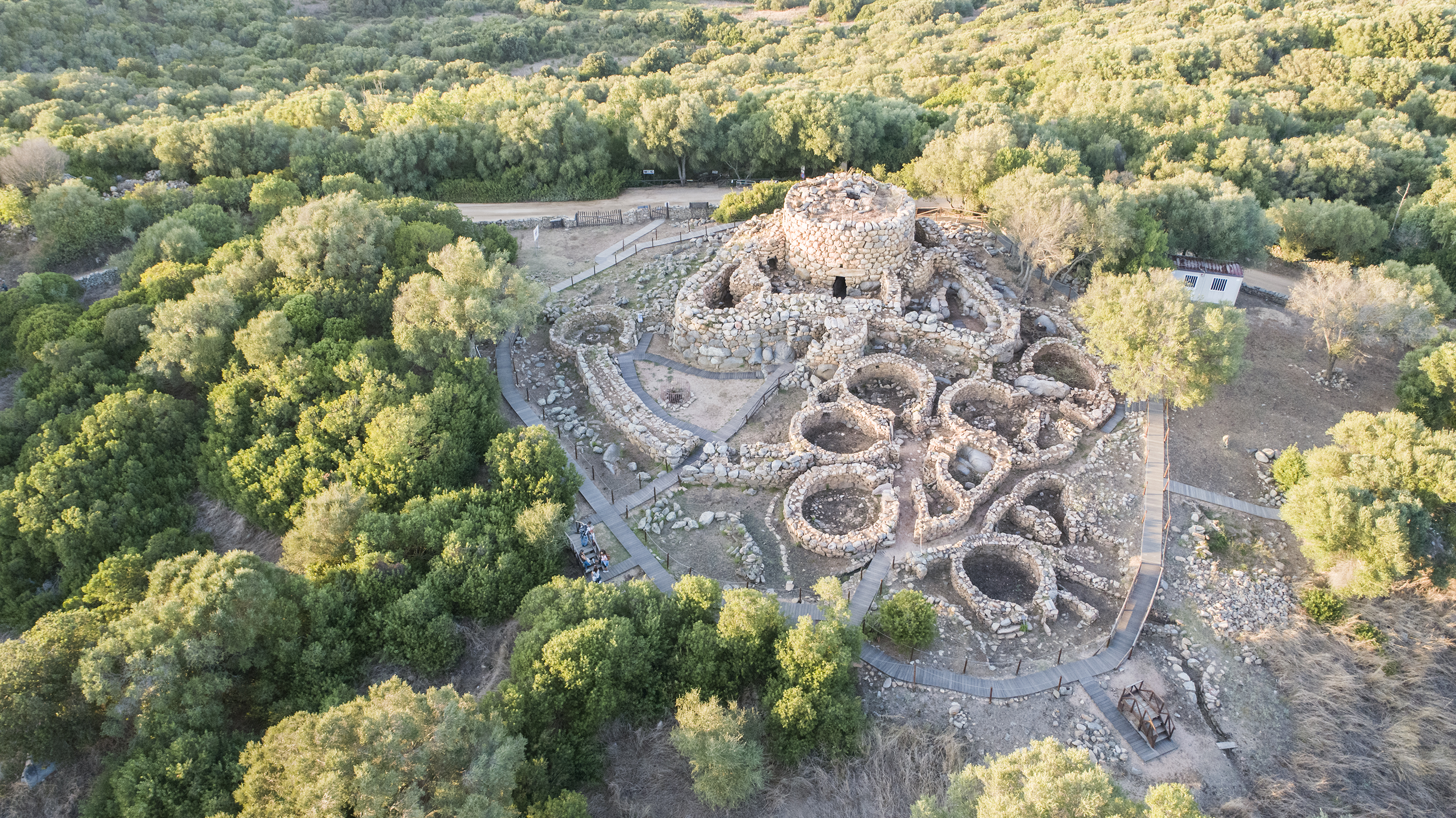Nuragic Archeosite La Prisgiona 0 Comments

At just 34 km and 35 minutes far from the Gabbiano Azzurro Hotel & Suites, and a short distance far from the Costa Smeralda, there is a bastion called La Prisgiona “The prison”, one of the most interesting Nuragic sites in north-eastern Sardinia, a Nuragic stronghold that tells of the evolution of its inhabitants. By visiting it, it takes you on a journey through a remote past, discovering the greatness and the splendour of a nuragic monument immersed both in the green of the Mediterranean scrub and in the mystery that surrounds it. The size, structure and location, on a granite relief overlooking the Capichera valley, makes it one of the most fascinating sites on the island. The complex extends over five hectares and is comprised of a nuraghe and a village of about 90-100 huts. Based on the findings during the excavations, it was understood that in each hut there was a distinct craft activity, such as the processing of ceramics and the production of bread, witnessed by a baking oven. Nearby is the stunning Tombs Of The Giants of Coddu Vecchiu.
It could have really been a Nuragic metropolis, located from the 14th to the 9th century BC, with its fortress, village and funerary monument. The nuraghe tholos (what is a Nuraghe? Read it --> here), with a false dome, has a central tower (called mastio) of almost 7 meters high and two lateral towers forming a bastion, further protected by a wall demarcating the large courtyard. Inside the courtyard there is a well, still functioning, 7 meters deep. The water supply was possible from a canalization system connected to the well, which is still visible today. At the bottom of the well, interesting remains of pottery have been found, including some specimens of askoid jugs (from the Greek askòs = jug), perhaps not intended only to contain water. The "meeting hut" is an enclosure with circular seats, not far from the well, which could accommodate a dozen people. A half-meter-high jug of unusual shape and different decorations has been found, perhaps used for a special drink reserved for those attending the important meetings, whether being political or religious.
Although for a long time it was believed that Gallura did not know the metallurgical techniques, the variety of the products of the land and the trade in the island, the excavations are confirming, however, that this area was totally integrated with the cultural events of the rest of the island. Not far from La Prisgiona there are important and beautiful Nuragic monuments: the Albucciu Nuragic Complex, the tombs of the giants of Li Lolghi, the necropolis of Li Muri, the temple of Malchittu.
Despite the fact of the continue attempting to know and interpret the mysteries of the Nuragic civilization (covering a period of about 1,500 years from 2000 to 500 BC), who only left evidence of the imposing stone buildings, the evocative funerary monuments and the thousands of bronze statuettes, the excavations of La Prigiona have contributed to the knowledge of what the organized population has developed there. The remains of provisions and millstones tell of the cultivation and conservation of cereals grown in the surrounding land. The modern gas chromatographic analyses carried out on the askoid jugs have made it possible to ascertain that they contained wine, confirming that the cultivation of the vine was in Sardinia an ancient knowledge, prior to the arrival of the Phoenicians, to whom it has so far been attributed the introducing of the plant in the island. Common objects such as cookers, wings for the fireplace, baking pans, pots, bowls, cups and utensils for spinning wool, allows us to piece together their daily life. Bones of sheep and goats, cattle and pigs confirm herding being their main activity. Remnants of birds and wild boars, shells and fish bones make it possible to understand what the ancient Sardinians used to eat.
By visiting the Nuraghe La Prisgiona, it takes you on such an interesting journey through a remote past, discovering the greatness and the splendour of a Nuragic monument immersed both in the green of the Mediterranean scrub and in the mystery that surrounds it. An experience that is truly worth taking back home with you.
"There are giants who keep silent for millennia and then, one fine day, awakened by who knows what magic, they decide to speak and reveal the secrets they have kept hidden for so long" (archaeologist Angela Antona).
--
Written by Daniela Toti
Teilen Sie uns Ihre Meinung mit!